Killer copy is the backbone of marketing.
Creating it is a powerful art and sweet science.
And it’s not about being clever or cute.
It’s about getting the person who’s reading your words to do one thing, and one thing only…
To take the desired action you want.
That’s it.
However to get your prospect to act, you need to grab his attention and keep it…all the way down to the last word. You need to push his emotional hot buttons and bring him to boiling point. And you need to lift risk off his shoulders, overcome objections, ask for the sale and justify your price.
Doing the above–without sounding like a robotic product description with a buy it now button–sounds like a handful doesn’t it?
Don’t worry, I got you covered. After reading this guide you’ll be equipped to:
- Create straight-for-the-jugular headlines that grab attention
- Nail your openings and introductions
- Craft a smooth sales message that propels your reader forward
- Create copy that keeps readers straightjacketed to the page
- Comfort your reader’s gnawing objections
- Learn how to hook your prospect with (proven) psychological hacks
So get comfortable, it’s time to harness the power of the written word to beef up your business with higher conversions.
Let’s go.
Get Into Bed With Your Customer
You can have beautifully written copy. You can have a gorgeous website design. You can even have a kick-ass product.
But if you don’t have a firm, white-knuckle grasp on the nightmare inducing pains and heart warming dreams of your customers; you’ll get as far as a solar powered snail…in an eclipse.
Think about it…if you aren’t aware of what fears make your customer’s throat dry and his heart heavy, and what goals he continually “replays” in his head when nobody is watching. How on earth are you going to convince him that your product/service can help him?
You can’t.
Velocity partners boasts a good understanding of their customers:
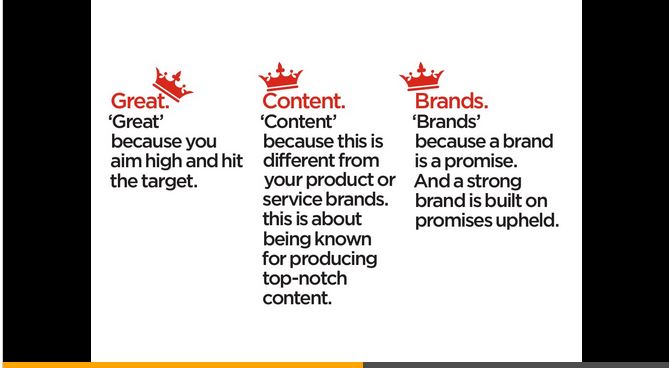
They could have spoke about anything related to content marketing, but they know their audience values the concept of branding.
This understanding allows them to create hot topic that emotionally resonates with their audience.
Here’s another great example from the Myfitnesspal mobile app:
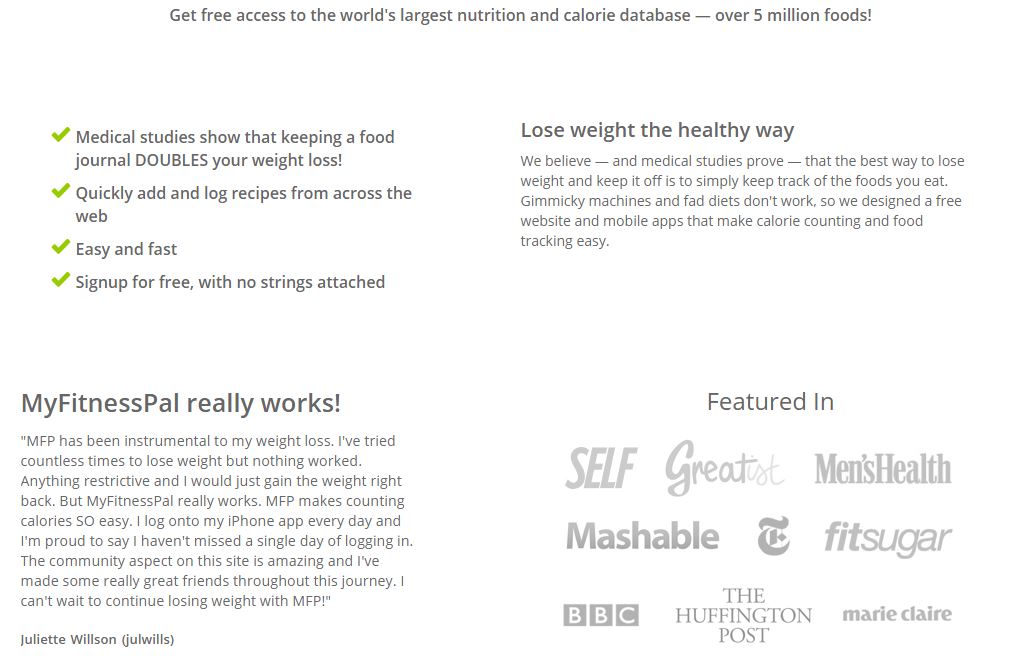
They know their audience is serious about losing weight; serious enough to track every calorie they consume.
They also know that people think counting calories is time consuming and difficult. So they stress how effortless it is to log recipes, and how easy the app is to use.
This snags the attention of anyone who’s committed to tracking calories without ripping their hair out or being robbed of their time.
To unearth the desires and pains that’ll sway your prospect towards action, start by resting your marketing hat for a minute and donning your “sales detective” one.
Becoming A Sales Detective
This is where you roll your sleeves up and start sleuthing behind the scenes.
Infamous copywriter John Carlton calls this becoming a sales detective and getting into a “ bogart-like gumshoe frame of mind.” You’re going to:
Becoming a sales detective is all about using research to step inside your customer’s world.
It will inject empathy into your copy and answers the all-important question…“who are you dealing with here?”
With the “preliminaries” out the way, let’s dive into the “nitty gritty” details of creating powerful copy.
Crafting Headlines That Jar Prospects Into Attention
Famed copywriter David Ogilvy said:
“On the average, five times as many people read the headlines as the body copy. When you have written your headline, you have spent 80 cents out of your dollar.”
Or in other words: A weak headline can make your business bleed money.
A case study by contentverve.com shows the huge power behind headlines. They switched the landing page headline for a local scandinavian gym from, “You Work Out Smarter at Fitness World” to “Group Training and Fitness at Your Local Gym”.
The results?
A 38.46% increase in memberships sold.
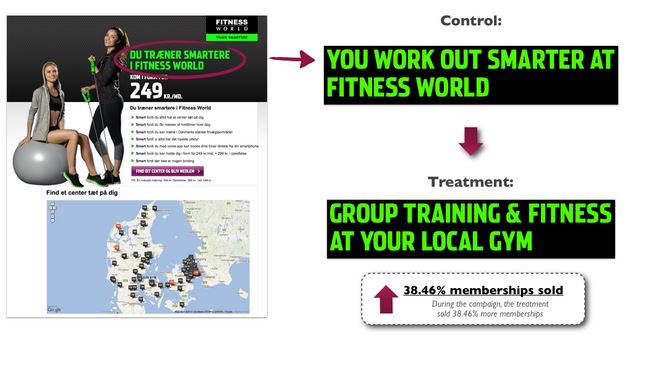
All from changing a headline.
When it comes to your copy, your headline has two main jobs:
- To snag the attention of your audience
- And seduce them into your pitch or ad
Different headlines work for different pages and user goals. But most high performing headlines usually do the following:
- Offer a mouthwatering benefit to the reader
- Tickle the reader’s curiosity
- Promise specific results within a certain time frame
One simple but effective headline formula you can follow is:
Benefit to customer + Time Period Where He’ll Get The Benefit + Overcome His Objections
“Double Your Website Traffic + In 2 months + Or Your Money Back”.
Another way to strengthen your headline is to attack it from a different angle. To do this, run it through a filter.
The Benefit Driven Filter
This attacks from a benefit driven angle, and simply focuses on telling the reader what’s in it for him.
Here’s an example from Box:
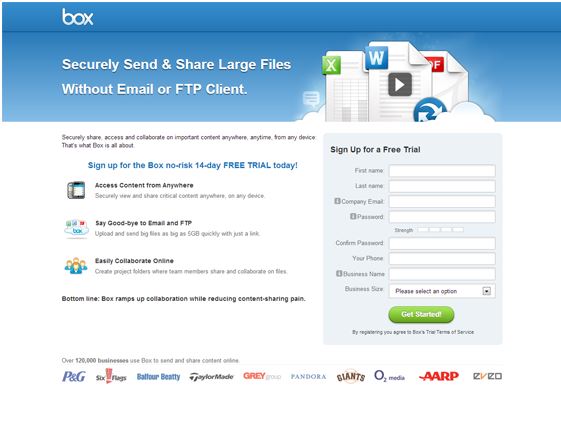
“Securely send & share large files without email or FTP client.”
It’s quick, clean, and does what any great headline should do; tell the reader what’s in it for him.
The Inspirational Filter
Applying this filter forces you to focus on how your product/service will help your reader achieve an “inspirational” goal or result.
Here’s an example from Tom Ewers Paid to Blog subscription service:
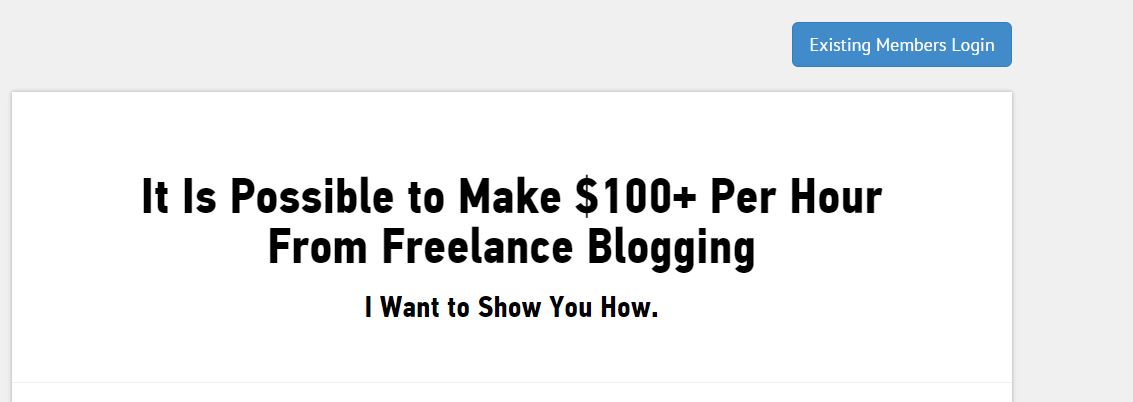
“It is possible to make $100+ Per Hour From Freelance Blogging. I want to show you how.”
Some freelancers are skeptical about making a comfortable living with blogging.
This headline confronts that doubt by claiming that it’s possible, and that the product will show you how.
The Aggressive/Competitive Filter
Who doesn’t like sound of of being the best or beating the competition?
That’s what aggressive filters focus on: Leaving the competition coughing in your dust bubbles.
Here’s an example from webprofits.com:
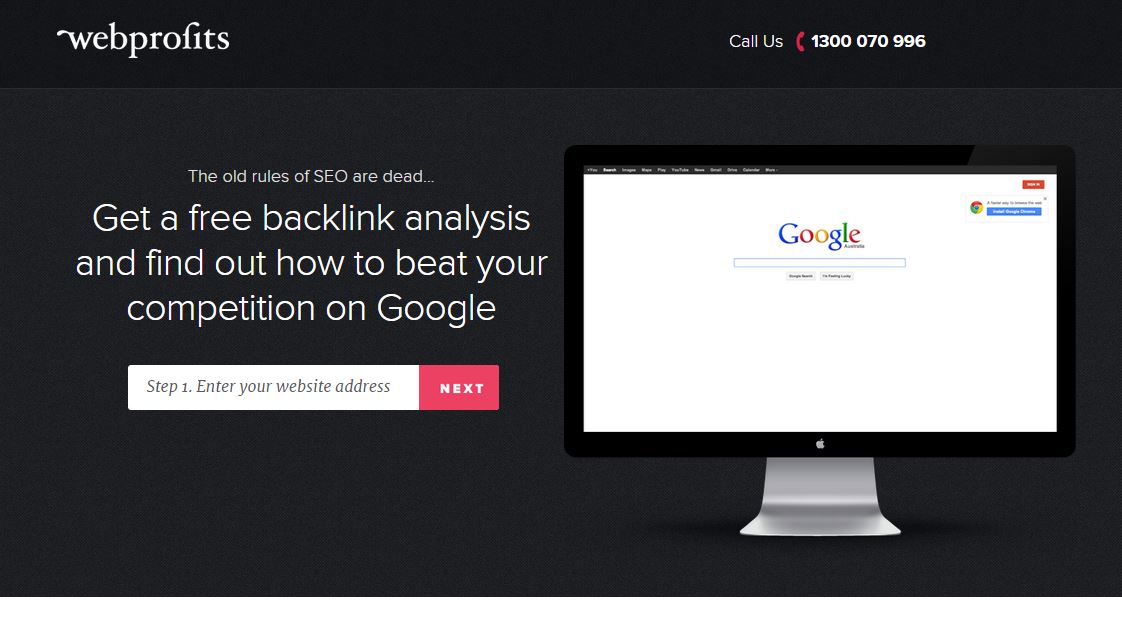
“Get a free backlink analysis and find out how to beat your competition on google”.
It conveys a solid benefit to the reader, and promises information on how they can overthrow their competition on Google.
Looking for more ways to come up with attention grabbing headlines? Here’s 9 more proven formulas.
The AIDA Formula
You have a white knuckle grasp on who your prospect is. You know his pains and desires. And you have a headline that’ll drag him in like demonic tornado.
Now it’s time to lay down some copy.
Productivity usually plummets at this stage. People find themselves drowning in writer’s block… wondering “what now?”
Well fear not, the famous AIDA formula (popularized by the legendary Gary Halbert) will pluck you from the crushing coils of writer’s block. Just like a superhero swinging down to pluck you from a speeding car.
The AIDA formula acts as a skeleton for most sales letters. It is structured around the wavering interest levels of your reader. Which helps you anticipate his thoughts, questions and objections.
This magnetizes your copy and gets your prospect to act.
So what exactly does AIDA stand for?
A – Attention
The opening, where you snag your prospect’s attention and quickly convey that what you have to say will benefit him. Usually the headline and the opening sentence.
I – Interest
This is where you pique the interest of your reader by either “rubbing salt in his open wounds” (agitating his pain), or by weaving a story that highlights how he’ll fulfill his desires.
D – Desire
Your reader is interested in your offer. Now it’s time to “stomp on his greed glands” and arouse his emotions by describing how your product/service will enhance his life.
A – Action
After your product sweeps the reader of his feet, this is where you invite him to take action. Usually to buy, download, click or subscribe.
Here’s an example of the AIDA formula from Get Response.com:
The headline “world’s easiest email marketing” grabs your attention.
And the bulleted list of benefits, sows the seeds of interest by telling you how their software will power up your email marketing.

The page then mentions who the product is for, and describes how its features and perks can help you, regardless of your skill level. This piques your interest, works up your desire and begins to chip away at your objections.
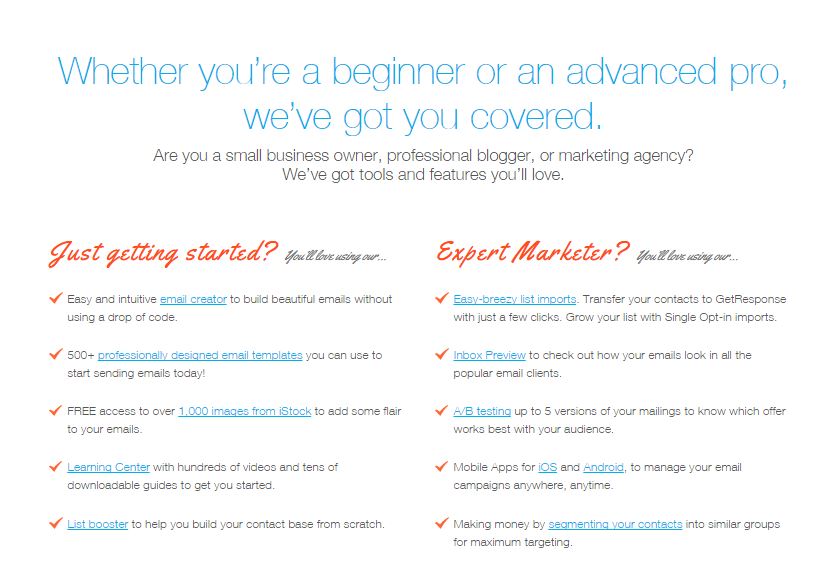
The page then intensifies your desire and tackles objections further. This is done by showing testimonials from industry leaders who you probably look up to.

The page then calls the reader to action by inviting them to a 30 day trial.
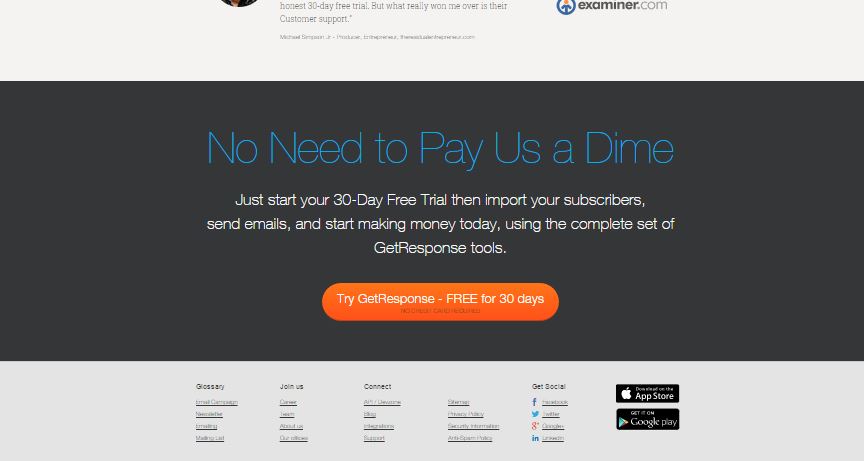
If you spend too much time gazing at a blank screen with a blinking cursor…use the AIDA formula. It’ll inject your copy with a smooth flow and structure that holds your readers attention and doesn’t let go.
Apply the Boxer Mindset To Copy
Writing copy is like boxing.
Especially when it comes to your openings.
In the ring, if you don’t want to be eating the canvas, you have to think 3-4 punches ahead.
You have to predict your opponent’s counters, slips and movement patterns before he even thinks of doing them. Will you throw feints to keep him on his toes? Or mix up your style to land more shots? Or close the distance for more impact?
Similarly, if you want to keep readers hooked to your copy, you have to anticipate their thoughts and be mindful of each word, sentence and paragraph you deliver.
To hit hard and get results–like a boxer’s punches–your words have to flow. Non-stop.
Are you going to mix up long and short sentences to keep your copy exciting? Ask questions that flow into the next paragraph? Or deploy an analogy to bring home the point you’re trying to make?
Whatever you do, remember that your reader should smoothly slip into each new tightly woven sentence and paragraph.
You’re essentially guiding his thoughts, just as you would aim to guide your opponents movements and strikes in the ring.
Crafting Openings That Suck People In
If you don’t have a killer opening that goes straight for the jugular, you don’t stand a chance at converting your prospect.
Because if your opening doesn’t motivate him to, he isn’t going to travel down your sales letter and click your buy it now button.
So how do you create openings that nudge your reader along? Here are 3 ways:
Open With a Question
Opening with a question is a great way to start your sales letter.
It almost forces your reader to mentally respond, creates a little conversation, and keeps your copy fresh. This helps streamline your reader’s thoughts on to the next sentence.
Keep It Short
Short sentences and paragraphs are like grease on a slide, they keep you moving forward, fast.
They also make for great openings.
Think about it, you’re more inclined to read a series of sweet, short 2-3 sentence paragraphs over a huge mammoth-like chunk of text, right?
Why? Because short sentences and paragraphs feel easy, and people take the path of least resistance. They also build momentum, which makes it easier for the reader to continue reading.
Joe Sugarman (renowned copywriter) describes this as being like a locomotive:
“When the locomotive starts to chug from a standing start, it really works hard. The amount of commitment the train must exert is monumental. But once this train starts to move, the next few feet become easier and the next few even easier. So it is with copy.”
Wistia does a great job of combining the two techniques above:
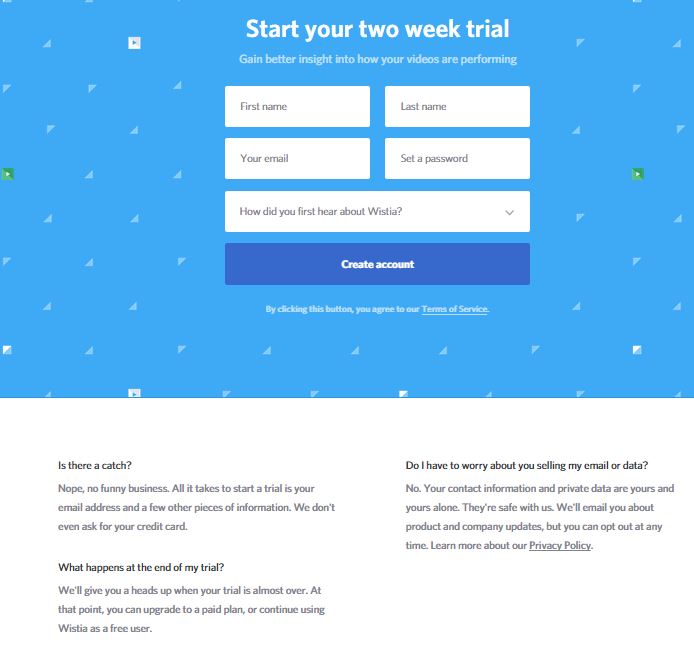
Notice how their copy feels engaging and conversational? That’s the questions at work. The questions also do a great job of setting the reader up for the next sentence and keeping him speeding through the copy.
Also, notice how you float from one sentence to another? That’s those short sentences at work.
State Your Claim
No fancy stuff.
Just be blunt and let readers know what you’re about.
Here’s an example from the Kissmetrics homepage:
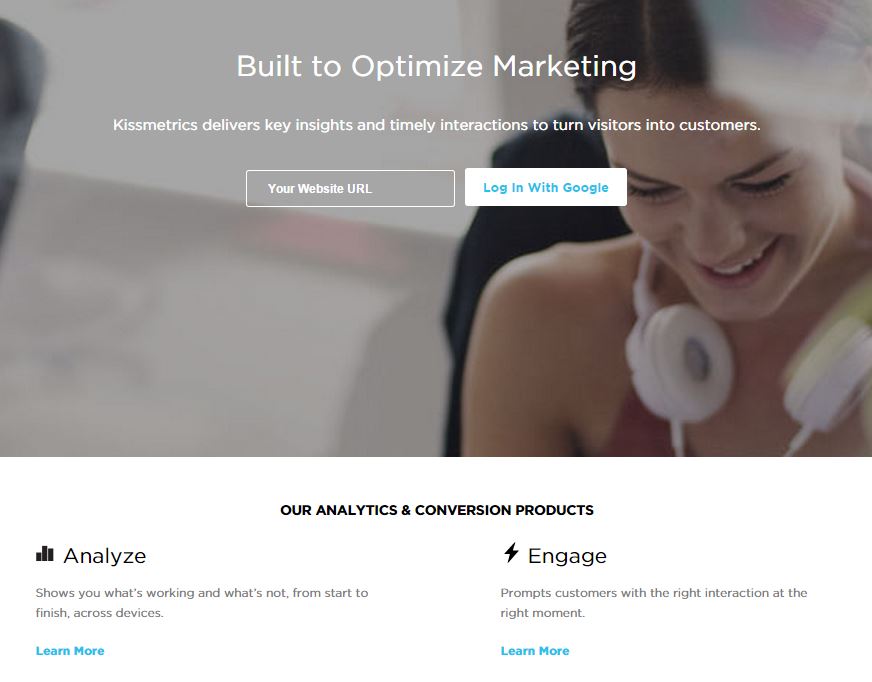
There’s no cuteness. They lay it out in the open by telling you exactly what they can do for you.
And because it is blunt and upfront…you will either instantly prickle with recognition, or pay no attention at all.
Lighting Up Your Prospects Greed Glands
Gary Halbert said:
“When it comes to writing copy, far too much attention is paid to the actual writing and far too little is paid to ferreting out facts about that which the copywriter is trying to sell.”
You’ve opened your copy with a bang. Got your reader’s attention and have captured his interest with a killer opening.
Next comes the meat of your sales letter.
Where you switch to full-auto, releasing a barrage of benefits that make your reader’s heart swell with desire, and create a burning itch that has to be scratched.
Benefits transform an ember of interest into a raging fire of desire that motivates people to act.
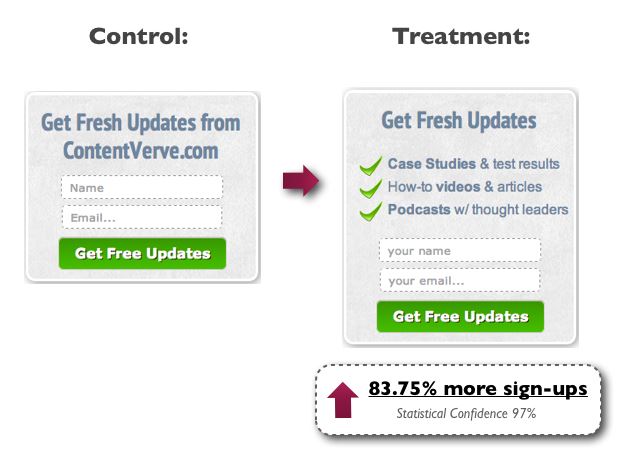
Michael Aagaard blasted conversions up 80% by adding three benefit driven bullet points to his opt-in form. That’s the kind of power benefits have.That’s why they are a must if you want to sell anything.
Here’s a lovely example of benefit driven copy from Wrangler:
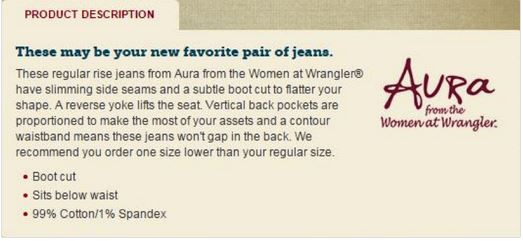
Wrangler could have listed their features and said:
- These regular rise jeans have slimming side seams and a subtle boot cut
- They also have a reverse yoke
- The jeans also have vertical back pockets and a contour waistband
Instead, they harnessed the power of benefit driven copy by showing how the features of their products benefit the user.
- Slimming side seams and subtle boot cut to flatter your shape
- A reverse yoke lifts the seat
- Vertical back pockets are proportion to make the most of your assets
- Contour waistbands means these jeans won’t gap in the back
Each feature constantly relates back to how it will make the reader look sexier, slimmer and more desirable. Which doesn’t just describe what they’re selling. It seductively drip feeds the product benefits into her brain.
A Note on Bullet Points
Bullet points are easy to read, make your copy more scannable, and allow you to pile on the mouthwatering benefits of your product.
But two lesser-known ways of maximizing your results with bullets are to mix them up with…
Blind Bullets
Blind bullets can be described as teaser bullets.
They provide a clear image of the benefit you receive, but not the specifics or the“how” behind the benefit. This deliberate vagueness arouses the reader’s curiosity and keeps him interested.
Take a look at these examples from the sales page for Doberman Dan’s newsletter:

See what’s going on here?
There’s a juicy benefit being offered, and its value is made higher with specific numbers. But the benefit still shadow-dances around the edges of the “how”.
It’s blind.
This prompts the reader to think “what secret food will give me a 5% edge?”, and “what is the master key to making serious money?” Adding to his curiosity and desire.
Open Bullets
Open bullets are the opposite of blind bullets.
They wow the reader by giving away detailed specifics behind the benefit.
Just like this opt in page:
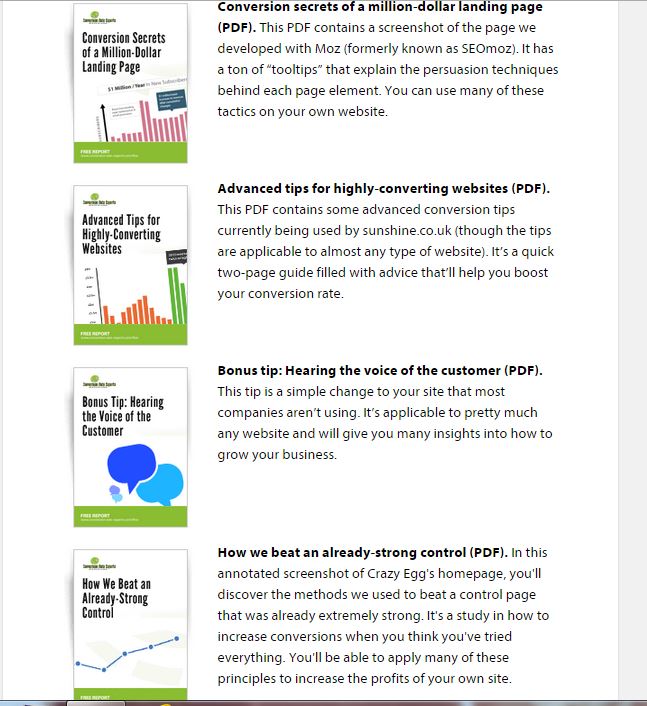
Each point has a “blind” style headline. Followed by detailed information on each case study and the benefit it offers. This soars the value of each point, and helps establish the idea that the seller “knows their stuff”.
Be sure to mix in blind and open bullets to keep your copy more engaging.
Take The Weight off His Shoulders
Your reader has breezed through your copy.
He’s ready.
He knows your offer will greatly benefit him. And his credit card is peeking out his wallet. But if only he could squash those doubts pecking at his brain…
“What if you don’t deliver?” “What if he doesn’t make extra money with your product? “What if he doesn’t save time?”
We’ve all felt this to some degree, right?
You’re at a checkout page and you love the product. But you’re just not sure.
I’ve experienced this many times. I’ve thought, would I get results from this? What if it tanks? And guess what?
After knowing that I didn’t risk a penny and there is no risk on me. I could just return the product or ask for my money back, I whipped my card out and completed the check-out.
Because I felt safe in buying the product.
That’s why guarantees are such an important part of your copy. They help you eliminate the risk of your prospect being “taken”.
Now, you don’t need a groundbreaking guarantee.
A guarantee that shows that your prospect isn’t at risk and stands to lose nothing will suffice.
If you’re selling software, you can offer trials and let your prospect try before they buy. I recently made a purchase from GetResponse, but only because they offered me a risk free trial beforehand.
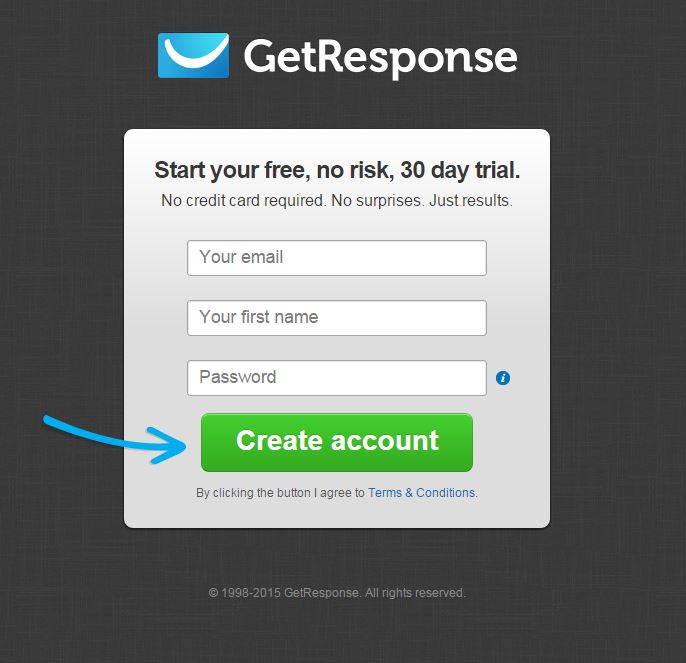
A free trial also does your marketing for you. And it allows you to put your money where your mouth is.
Your prospect gets first hand experience of the benefits of your product. He could potentially boost sales/conversions without spending a dime. And nothing sells someone like fresh cash, or concrete results.
Create a Greased Slide
How your copy is written will impact your results greatly.
That’s why it’s important to make sure that your copy is easy and fun to read.
As Joseph Sugarman said, your copy should read like a greased slide.
There are 101 ways to power up your writing, but some basic techniques that you should stick to are:
Keep Sentences Short, But Vary Your Pace
Gary Provost sums this up perfectly…
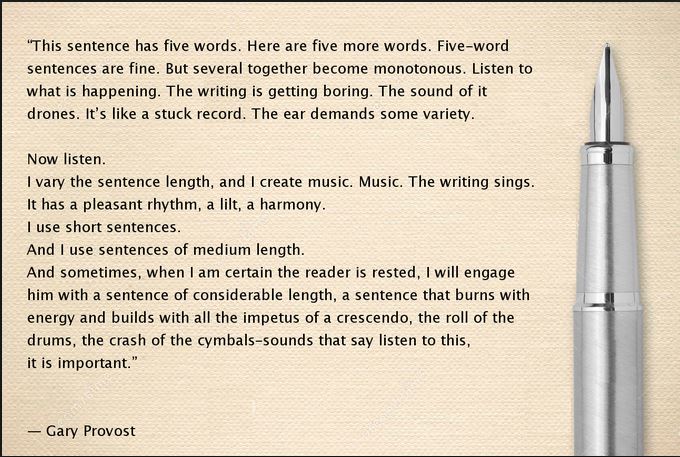
Deploy Powerful Action Verbs, Kill Fluff
“Adjectives are just fluff and air. Like tossing flowers out of your ad to get your prospects attention.” — John Carlton
Here’s a written scene that relies on adjectives instead of verbs:
“He quickly raised his combat knife to see where his attackers were. He composedly stepped out of his life-saving cover. The black gun menacingly fired two loud shot that quickly found their targets.”
The same scene after powering it up with action verbs:
“He used the reflection in his combat knife to gather a rough idea of their location and stepped out of cover. The gun rattled to life. Each shot whizzed to its destination with lightening fast speed.”
See the difference here?
One description is heavy and hard. It requires the reader to wade through bloated words and mundane text.
The other packs-a-punch, and delivers powerful imagery straight into the reader’s brain. Because it uses action verbs to describe and removes the fluff.
Make it Easy To Swing From Paragraph to Paragraph
Ever heard of transitions?
They’re words and phrases that can be viewed as “literary tubes”, because they connect ideas and sentences together.
For example, the sentence below uses “so” as a transition:
“You want to boost your conversions without spending tons of money, so you tweak your copy.”
Unless you want to sound like an illiterate robot, transitions are a must in all forms of writing. But they are even more effective when they become delayed transitions.
Delayed transitions place the joining phrase, or word, at the beginning of the next sentence or paragraph.
Here’s an example from Apple’s watchOS 2 preview page:

Delayed transitions are used at the beginning of each sentence to connect and flow right into the next.
Using delayed transition makes your copy better because:
- They make it easier to start reading a new line.
- They help create shorter sentences. This keeps readers engaged and builds momentum.
- They switch up your flow, which as we know, prevents your copy from becoming stale.
Psychologically Advanced Copywriting Tricks
The basics have been covered.
Now it’s time for some advanced copywriting tips to magnetize your copy.
Boost your Perceived Value With Re-framing
According to Wikipedia, “reframing is a psychological technique that consists of identifying and then disputing irrational or maladaptive thoughts. Reframing is a way of viewing and experiencing events, ideas, concepts and emotions to find more positive alternatives.”
With regards to marketing, reframing is when you increase the perceived value of a product by tweaking the buying lens from which your reader views it.
And it’s been proven to work.
Here’s an example of reframing from Volkswagen:
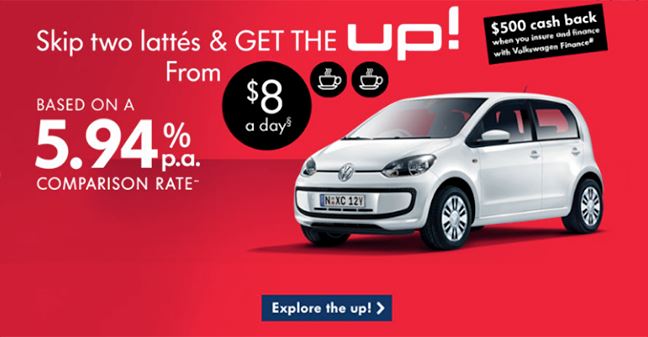
The price of a brand new car is reframed with the price of two lattes a day. This instantly makes the offer more appealing because it softens the blow of the price.
Here’s another more detailed example:
What price can you place on learning how to get more copywriting clients than you can manage? $2,000? $3000? $5000? (You can easily earn all these numbers back within a month of learning how to secure clients.)
My standard fee for private coaching is $300/hour and in my supercharged copywriting course, you get over 15 hours of my teaching. That would leave the bill at $4,500.
However, supercharged copy course won’t cost you anywhere near that. This investment in your career and life is only…
$260.
And let’s be real, you’ll most likely earn twice that much with your first gig.
There are two re-frames going on at the same time.
The first is when the price of the course ($260) is contrasted to how much you can earn in your first month ($2000). The second occurs when the price of private coaching ($4500) is compared to the price of the course ($260).
This takes the reader’s view of the product from being just a “$260 video course” to a wise educational investment in which they save $4460.
Keep Readers Hooked With Open Loops
Open loops are everywhere.
And they’re powerful, because our brains have a natural craving for completion.
As discovered by scientist Bluma Zeigarnik, our brains undergo a state of tension when they view something as incomplete.
A tension that won’t be relieved until you feel the task at hand, or whatever you’re involved in, is complete.
It’s the feeling you get when you’re immersed in a book that you just can’t seem to put down.
The feeling you get when your favorite TV episode ends, and you’re itching to find out what happens next.
It’s the gnawing feeling in the back of your brain when leave your keys at home and step out the house.
When it comes to writing copy, an open loop is a portion of your sales letter that doesn’t immediately tie up.
Here’s an example from Jon Morrow’s Serious Bloggers Only sales letter:
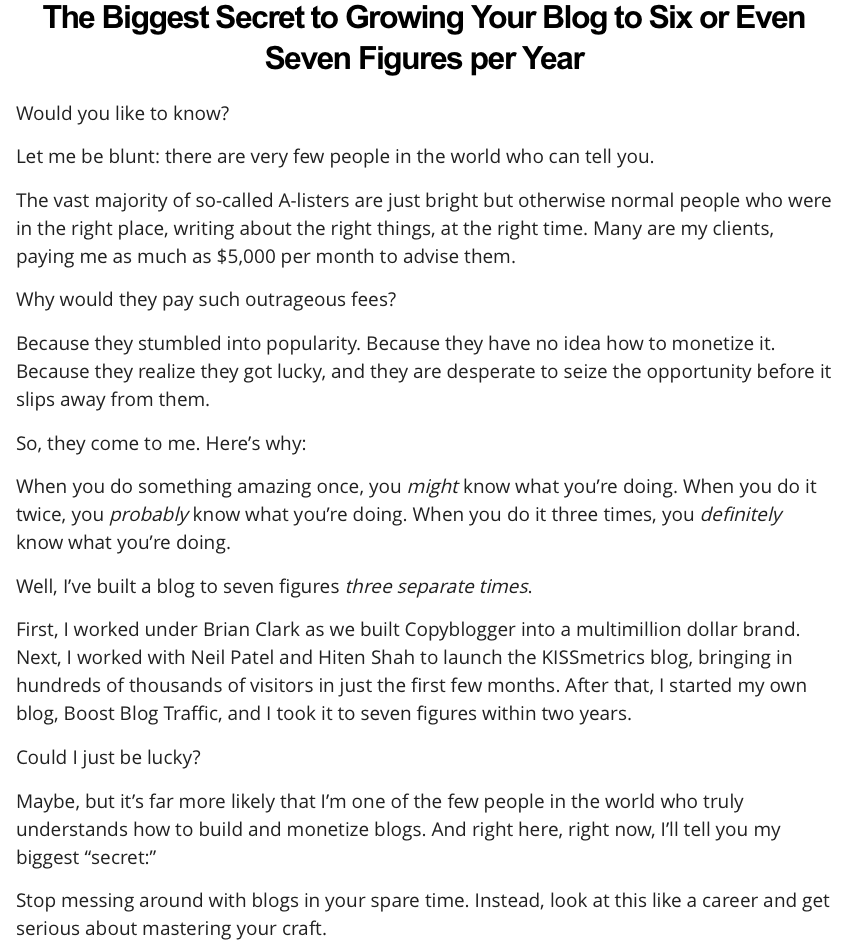
Jon opens an itching open loop in the reader’s brain at the start of the sales letter. He does this by mentioning the “biggest secret to taking your blog to six or seven figures per year”.
After opening this loop, he doesn’t tie it up immediately.
Instead, he teases the reader by asking if they’d like to know. And mentions how people pay him up to $5000 for his expertise and advice…
A deeper mental itch is then created because this causes the reader to question “why is his knowledge so valuable?” and “what makes him so special, whats this secret?”
This motivates the reader to travel further down the copy. Where he ties up the open loop, and pitches to the reader.
The easiest way to implement open loops in your copy is to ask more questions.
Or…ask questions and delay the answer to keep your reader invested.
One Final Thing
“You must not come lightly to the blank page.”
–Stephen King, On Writing
Ever seen an athlete or world-class performer come to his task lightly?
You don’t.
Because to give a riveting performance, or win, they have to be focused, charged, and ready to spring.
The same mentality applies to writing copy…or anything that moves people to action.
Jon Morrow put this perfectly when he said:
“Your readers are the dead batteries. You are the live one. The written word is your pair of jumper cables.”
Charge yourself with emotion, close your eyes and imagine yourself as your customer, feeling the pain that your product/service solves.
You’ll instantly add a flaming intensity to your copy that snaps readers out of their slumber, and connect to the living, breathing human who will benefit from your offer.
Conclusion
What design converts better with your copy?
What words or phrases seem to click with your readers?
Where do reader’s lose/gain interest?
You can only know if you test.
Be sure to experiment with different calls to actions, headlines and benefits for maximum conversions.
What do you find most frustrating about writing copy? Let me know in the comments below.
About the Author: Hassan Ud-deen is a content marketing consultant who is addicted to words. He’s a specialist in article and case study writing for traffic generation. Hit him up on LinkedIn or Twitter.
























